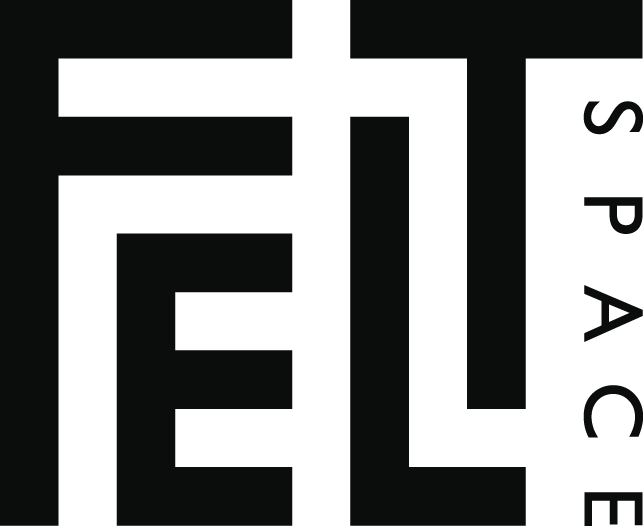LIKE I’M APART / SHIFTING TERRAINS – A QUIET DISTURBANCE
Artist - Steven Cybulka (Like I’m Apart) and Gail Hocking (Shifting Terrains – A Quiet Disturbance)
Author – Brianna Speigh
The sensitivity and honesty informing these installations, created by Steven Cybulka and Gail Hocking, speaks to deep personal experiences. They are a reflection and investigation into human nature. They imprint the space and imprint on me.
Steven Cybulka’s Like I’m Apart is an immersive, provocative installation converting the front gallery of FELTspace into chaos. An inky dark space, there are fragments of glass and Perspex jutting out vertically from floor to ceiling. They pierce the space; separating and isolating human interaction. The omnipresent darkness points towards what Jung describes as the shadow archetype. According to Jung the shadow archetype are aspects of ourselves that the ego represses; what is repressed can be good or bad, but the shadow represents ideas challenging how we want to be perceived. Hence, Jung’s shadow commonly refers to our inner turmoils.[1]
Colliding with shards of black Perspex that equal my height, I am surrounded and engulfed by jagged fragments of something that used to be a whole. Something has broken and the pieces are scattered across this space, blocking and obscuring my path. I can’t get past them. I am forced to stop and look at these ominous forms. Coloured lights illuminate the harsh edges of iceberg-like structures. These pieces are everywhere. The repetition of them is overwhelming and claustrophobic. Amongst the chaos, a reoccurring image persistently catches my eye – a girl with a hidden face and an elevated peace sign. I consider this image. I don’t understand it. A week passes, I think I might understand. The girl in the image is symbolic. Her peace sign is what we reveal of ourselves and her buried face is what we hide away. The image adds another layer of complexity to an installation that communicates ideas on individuality and identity – how we strive to be perceived and how this aligns with what we truly feel.
Delving into Shifting Terrains – A Quiet Disturbance, is an insightful sensory experience; four sculptural pieces and one video installation create a poignant exploration of the phenomenon of migration. Latex and plaster are used throughout this body of work; establishing an eloquent tension through the symbiosis of these materials.
The smell of latex pervades the small space. A video projected into the corner of the room shows latex in its viscous state. Squirming, its consistency makes me feel uneasy and ill, reminding me of my stomach churning. Latex stretches from the ceiling and off the walls, revealing its elasticity as it connects with plaster forms. It stretches to the point of breaking, the slightest added weight will tear it apart, but it remains intact, strong and together. The latex is smooth and yellowish in colour, not completely opaque – similar in appearance to my own skin. It is part of each sculpture, used to connect and encase objects in place – I don’t have to touch it to know that it would feel just like my own skin.
Plaster formations appear like Dali’s drooping clocks; slumping and slipping away, but are simultaneously grasping and searching. A connection to body and human emotion sweeps through me only moments into seeing these sculptures. These forms seem human in their need to exist in a place with the support of something else. They have human characteristics that comply with trying to fit into an unfamiliar or uncomfortable place, I think of Lewis Carrols Alice shrinking and swimming in her own tears.
These powerful sculptural installations speak to Hocking’s ability to transform latex and plaster into anthropomorphic investigations, revealing the subtle discomforts of displacement.
Experiencing Like I’m Apart and Shifting Terrains – A Quiet Disturbance fills me with excitement and wonder. Cybulka encourages me to explore my own stream of consciousness and Hocking challenges me to ponder my physical place in the world and how I am impacted by space. In reflecting on these ideas I am overwhelmed by the thought that visual communication is so powerful – it carries such truth and strength and I can’t help but to recognise how beautiful this is. Steven Cybulka and Gail Hocking imprint on FELTspace, and on me.
[1] Tacey, D 2012, The Jung Reader, Taylor and Francis, Hoboken, p.158-159
